
Influential architect Léon Krier has died at the age of 79. Described by The Guardian as “one of the most influential town planners of his generation,” Krier was the leading figure of the New Urbanism movement, which called for a return to traditional walkable urban areas and compact, human-scale urbanism.
“The work of the New Urbanist movement is grounded in the understandings of architecture, urbanism, modernity, and community that Léon contributed to this world,” explains Mallory Baches, president of the Congress for the New Urbanism. “We are indebted to his intellectual courage, and we remain champions of both the beauty and the rationality he saw to be so desperately needed in the built environment.”
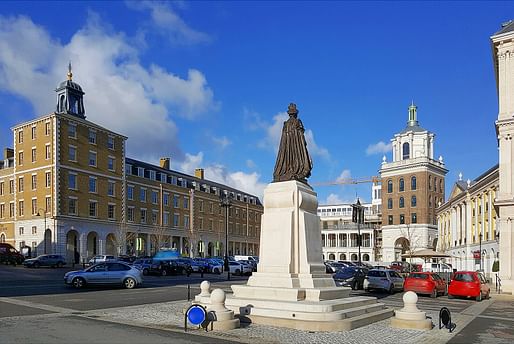
The Architectural Record reports that Krier, who was suffering from colon cancer, “apparently jumped to his death from the walls of Palma’s cathedral” in Spain. While local newspapers have reported the incident involved a 79-year-old Luxembourger, Krier himself has not been named. The New York Times, meanwhile, reports that Krier "died on June 17 near his vacation home in Palma de Mallorca, Spain."
In the wake of his death as an rumored suicide, Archinect's community shared a wide range of reactions in an ongoing discussion thread. “Suicide always causes trauma for the people who witness someone else do it,” wrote Donna Sink, “and I wish he’d picked a less public way to do it, if this is true.”
gwharton reflected on Krier's legacy: “Krier, the ‘Enfant Terrible’ and dragon-slayer of late modern architecture, was a genius romantic and generational talent. Sad to see him go out this way, but he died as he lived.”
“I don’t criticize the man for committing suicide,” wrote OddArchitect. “My opinion is that choosing to end one’s life is the only actual right anyone has.”
Several users shared personal experiences with end-of-life care, weighing in on the emotional and medical complexities that often accompany terminal illness. “Sometimes medicine doesn't know how to sit it out and respect the little life we have left,” observed user JLC-1, reflecting on the difficult final weeks of a loved one.
b3tadine[sutures] drew a cinematic parallel, remarking: “Wait, so he did a Stourley Kracklite? How unoriginal,” referencing the protagonist of Peter Greenaway’s 1987 film The Belly of an Architect. In the film, the ailing architect Stourley Kracklite climbs to the upper terrace of Rome’s Monument to Victor Emmanuel II and throws himself over the balustrade during the opening of his exhibition.
Krier was awarded the Driehaus Prize in architecture in 2003, and was the master planner behind Poundbury in England, for which King Charles (then Prince Charles) served as developer. Other notable works by Krier include the Krier House in Seaside, Florida, and the Village Hall in Windsor, Vero Beach, Florida. Krier was also formerly a visiting professor at Princeton, Yale, Virginia, Cornell, and Notre Dame.
Krier was also, at times, a controversial figure in architectural discourse. In June 2013, Michael Sorkin wrote an article for The Nation criticizing Krier's book on Nazi architect Albert Speer, writing “But why bother to defend Speer as an architectural talent? Krier uses Speer, whom he does seem genuinely to revere, to continue a battle against an imaginary enemy, a long-gone modernist cabal that he thinks will be galled by his argument.”
*If you or anyone you know is in crisis or exhibiting the warning signs of suicide, call the National Suicide Prevention Lifeline (Lifeline) at 1-800-273-TALK (8255), or text the Crisis Text Line (text HELLO to 741741). Both services are free and available 24 hours a day, seven days a week. All calls are confidential.
25 Comments
Thank you for this article, Paul.
There is certainly a romanticism in architects, in general, and for a specific building influencing one sufficiently to commit a bold act. I can't recommend highly enough the book/travelogue Bold Ventures by Charlotte van den Broeck, which explores the myth and reality of 13 architects who possibly did, but maybe did not, die by their own hand over the failure of a building design of their own.
In any case, Leon Krier's death is without a doubt another significant example of an older guard in whose philosophy many architects were raised. I'm curious if I'll live long enough to see a new guard truly come up.
Thanks for sharing that book Donna! Looks like a sobering read. Our industry could certainly benefit from in-depth psychological studies. It will be interesting to see how future generations evolve.
I never knew he was the brother of the late Rob Krier, the postmodernist.
What a guy he was!
I know I've made fun of Trads and thus Krier's insistence that traditional forms of *architecture* are the only forms appropriate for traditional forms of *urbanism* (I disagree). So I did a little Google Maps tour of Poundbury to try to focus on the things I *do* like about the architecture there.
I love the starkness of this Neo-Classical and I love the intense glazing/wall proportion that is at odds with it.
Love a little alley access door and the frills of life all around it.
Even with the car focus that ultimately ruins every bit of urbanism, a little human-sized secret walkway is such a delight.
Continuing in comments...
The unexpected roofline is unexpected. I like it!
I do worry about the size of the gutter, though.
There's seriously something almost approaching Plecnik about these tall slim columns! I like them in contrast to the brick across the way.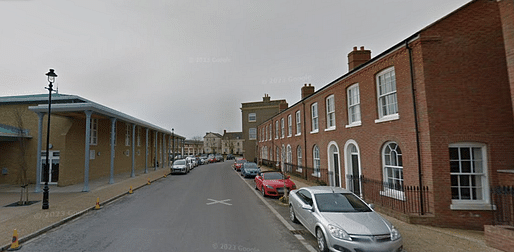
This brickwork is good and *every* sidewalk IMO should have an arcade. Nice industrial lite.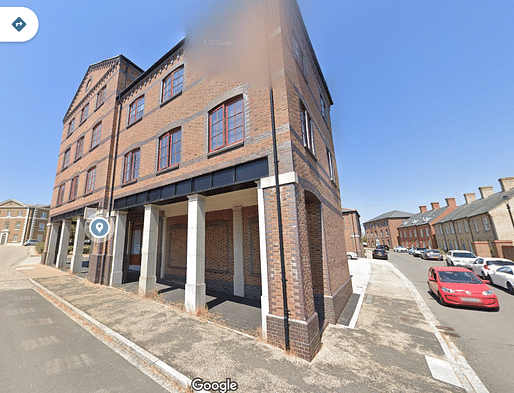
This little seating nook out of the rain.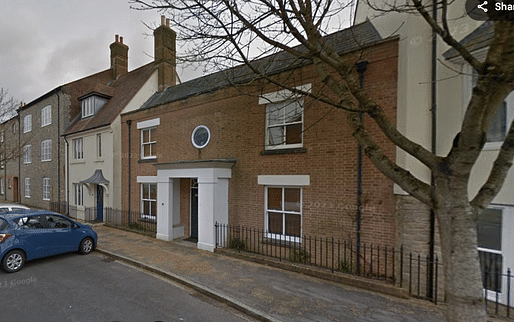
The absolute rigor of the window arrangement. This really appealed to me as an undergrad student. Now I understand that weather will make this look dreary over time, also, no roof over the door is at odds with a proclaimed intent to make buildings work for humans. But the simplicity appeals.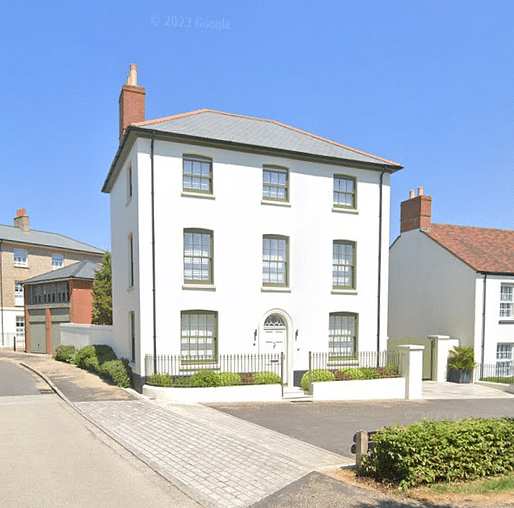
I admit I love ALL the cute little towers. It's the best part of Seaside too, I'm a sucker for them.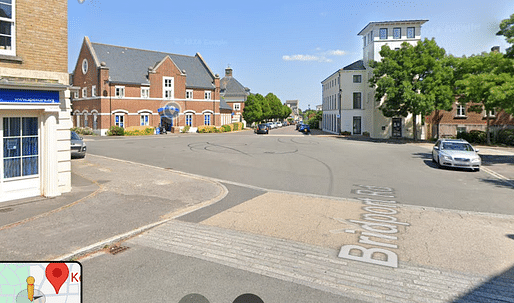
Can't go wrong with a tower at a corner!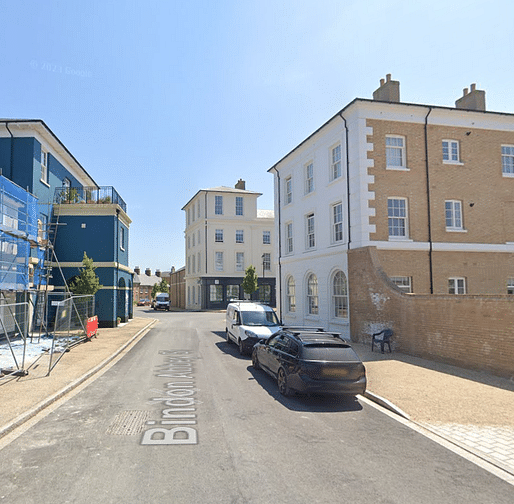
Finally, I doubt the name was Krier's idea; I assume it was the King's. But it also never fails to remind me of the greatest USian Zillow picture in the history of real estate, and that makes me smile.
Thanks for the gallery, Donna!
That is a great stroll/review Donna.
I lived in the UK for awhile so I know the weather is not helping the photos, but Poundbury has always felt bleak to me. It tries hard to ignore cars, but doesnt allow the town to live the way London does for example (even with all the shackles holding down growth in the city), and the cars win anyway.
Population isnt big enough, or there wasnt enough money to aim for human places, or there was simply a misunderstanding about the scale of buildings being enough to create the vibe. It isnt. The town is introverted, cold and for all the effort to be walkable still visibly reliant on cars.
What Krier has done for the discussion is invaluable. We would not have any chance at all of making good urban form without his effort.
Even so, the ideology of new urbanism remains too closed to organic growth and change to ever make a dent. Our future cities will be better served by a hybrid, open to all kind of thinking. Less reactionary, more leading. Less controlling, more freedom. Less certainty, more room to pivot.
Krier hinted at all of that, but got caught in his own rhetoric. At least that is how I have come to see his work and the new urbanist experiment. it is a lot, but only the beginning of the story. What comes next is what I am more interested in...
New Urbanism is 'reactionary' and 'controlling', yet modernism isn't? I recommend you attend a CNU to see that there is great work being done to alleviate the climate crisis and improve equity. Disregard the historic styles as one might walking though beautiful London, Paris, New York...
Interesting take, beginning with the masthead: "reportedly jumped from Palma's cathedral". Maybe wait a bit to confirm out of respect?
Will Galloway's take is especially silly. Calling out New Urbanist ideology for being 'reactionary' and 'controlling' as if Modernism wasn't. I get you don't like traditional architecture, but most people do. And New Urbanism was always just a marketing scheme to get walkable urbanism back as a viable option to the car oriented sprawl that has destroyed so much of the planet. The reason it was sold with traditional architecture is that it had to engage builders where they work, and that is catering to a market that tends to prefer traditional architecture. Having just come back from last the Congress of New Urbanism, there is plenty of work being done to improve the environment and deliver more equitable outcomes, from affordability to getting small developers into the game.
So keep putting out silly propaganda to keep validating the modernist ideology you has to accept to get through architecture school. In the meantime, good people will continue to improve the built environment with ideas of all stripes, modernist, new urbanist or whatever. It's improving lives that matters most, not what team you play for.
Léon was a sharp theorist and a wonderful man. He influenced many. He's great book, "The Architecture of Community" was a formative read for me.
Perhaps most delightful was his mode of using wry cartoons to teach lessons.
The last one is one of my favorites of his.
I've never seen this last one. Really good.
One of my first drawing exercises in architecture school was drafting Leons house in Santa Rosa, remember initially not liking the assignment as it was a classical style building, but as you drew the plans and elevations, you understood the purpose you started to get inspired by it.
Completely agree with TIQM about his wonderful, witty (often bitingly so) illustrations of architectural and urban theory. I use some of them in class all the time-- great time-savers when explicating these ideas to youngsters.
One of my favorites in the witty, observational category.
This is one of his questionable sketches. I don't know if it has something to do with his admiration for Albert Speer but it sure looks like he doesn't like race mixing.
Block this user
Are you sure you want to block this user and hide all related comments throughout the site?
Thanks for your comment!
This is your first comment on Archinect. Your comment will be visible once approved.
Thanks for your comment!
Your comment has been submitted and is currently awaiting moderation. We review all comments in this discussion to ensure the conversation remains thoughtful, respectful, and constructive.
We welcome a diversity of opinions — approval is not based on agreement, but on maintaining a high level of discourse.